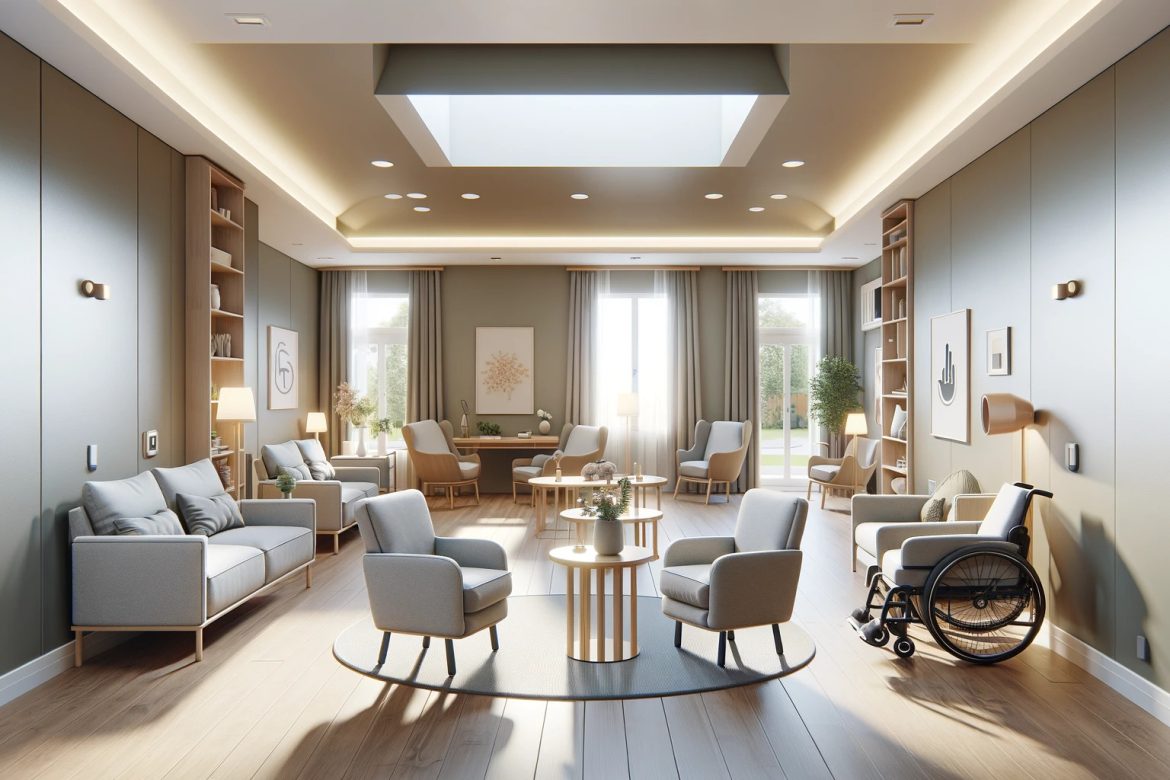As populations age and more people live with disabilities or unique health concerns, accessibility, and inclusiveness have become important considerations when designing residential spaces. Thoughtful room planning helps create living environments that anyone can use while being aesthetically pleasing rather than institutional. This article provides tips for designing rooms to accommodate a range of ages and abilities.
Plan for Just-Right Room Dimensions and Scale
Ensure ample floor space for maneuvering wheelchairs, walkers, and other assistive devices by consulting prescribed clearance specifications. Allow enough space approaching thresholds and through doorways at kitchens, bathrooms, and entries. Yet stability bars, grab handles, and handrails should fall readily within reach around perimeter walls, beside staircases, and at transitional zones. Easy room layout planner free is your choice to fix all this.
Choose optimal furniture dimensions, seat heights, and tabletop clearance. Raised toilet seats, adjustable beds, customizable desks, and flexible storage promote independent living for those with limited range of motion. Open shelving and glass cabinet doors allow easy access and visibility of contents. Night lights, task lighting, and large, well-signed print details also assist the visually impaired.
Incorporate Multi-sensory Design Elements
Contrasting colors, textures, and even scents in décor assist those with sensory regulation issues often accompanying autism and mood disorders. Lush green plants and herbs or fragrant flowers can soothe anxiety in safe spaces. Vibrant colors pep up motivation while tactile, stress-relieving fidget objects comfort restless hands. Acoustically absorbing flooring and wall panels buffer noise sensitivity. Controllable lighting regulates visual stimuli.
Ideas for multi-sensory spaces:
- Use strongly contrasting colors on walls, floors, furnishings, and accessories to define spaces clearly for the visually impaired. This also assists those with cognitive challenges.
- Incorporate natural materials like wood, cotton, and wool, which feel comforting to the touch over long periods versus composites. Natural fibers also breathe better.
- Display meaningful memorabilia and decorative items with texture, shine, and bold colors, sparking positive emotions through sight.
- Add calming scents using fresh flowers, diffusers with essential oils like lavender, and opening windows for fresh air. Avoid synthetic perfumes and fragrances which may irritate.
- Install acoustic sound-absorbing wall and ceiling panels to prevent echo and sound sensitivity issues. Rugs over hard flooring prevent vibrations from traveling from room to room as well.
- Provide both bright, uniformly diffused light for visibility plus adjustable accent lighting. Lighting variety prevents headaches and eyestrain while allowing task modifications. Light therapy lamps boost moods.
Careful attention to smells, sights, sounds, touch sensations and lighting accommodates those with sensory disorders. This allows them to regulate exposures for comfort and engagement while spending extended periods safely occupying multi-purpose rooms.
Build Zones for Socializing and Solitude
Open gathering spaces benefit those isolated due to limited mobility while separate rooms serve others affected by recurring fatigue or illness as peaceful havens or self-care sanctuaries. Multi-functional privacy screens define flexible zones. Nooks with plush, supportive seats near sunny windows lift moods. Structural sound blocks between adjoining units prevent excessive neighbor noise. Soothing colors minimize distraction.
Tips for designing social and private zones:
- Create open-concept living rooms, allowing easy mobility between seating areas. Multiple conversation groupings encourage connection.
- Use moveable room dividers or privacy screens to define quiet nooks for reading, meditation, or naps when fatigue sets in.
- Build small, peaceful sunroom additions with views of nature and comfortable chairs for individual reflection or intimate conversation areas.
- Position cozy window seats with therapeutic sunlight and views soothing anxiety yet slightly separate from main household activities.
- Install solid core doors and enhanced insulation between units and in bedrooms to buffer both desirable and unwanted noise from surrounding spaces.
- Choose calming, cool blue or green color palettes shown to relax the nervous system over stimulating reds and oranges for restorative rooms.
Accommodating social gatherings and personal solitude enhances quality time with family and friends while providing necessary private spaces to recharge emotional and physical batteries.
Choose Healthy, Nontoxic Materials Carefully
Appropriate indoor environmental quality regards both physical health concerns and alleviates distractions, sensory issues, and confusion in cognitive disorders. Low-maintenance sanitary finishes prevent mold and allergens accumulation, while pure air quality reduces asthma triggers. Stain-resistant rugs and fabrics improve indoor air quality and stand up well to frequent use and cleanings. Minimize odors and harmful off-gassing associated with some carpets, plastics, and chemically processed building materials.
Select User-Friendly Amenities and Appliances
Update to touchless/motion sensor controls operating sinks, soap dispensers, towel dispensers, lighting, and toilets to limit germ exposures. Hands-free technologies also eliminate frustration and perceived barriers for those with limited mobility or dexterity
Additional user-friendly ideas:
- Specify cabinets and microwaves set at accessible heights for all users, including children and those in wheelchairs.
- Look for refrigerators and freezers with pull-out shelving, transparent front panels, and interior lighting to keep the contents visible without strain.
- Select front-loading laundry equipment placed on risers at ideal heights, minimizing awkward bending and lifting laundry baskets. Stacked washer-dryer units work in tight spaces.
- Choose self-cleaning, one-touch appliances like air fryers, multicookers, and dishwashers, simplifying meal preparation for seniors, busy families, or singles prone to skipping healthy home-cooked options.
- Install video doorbells that are viewable on phones and smart home hub panels. These allow screening visitors without traversing rooms, easing anxiety for homebound and time-strapped occupants.
Prioritizing the latest intuitive smart home and appliance upgrades suits all ages and abilities for safe, independent livability along with convenient lifestyle integration.
Research Financial Assistance Options
Significant tax rebates, credits, and deductions exist to offset expenses in adapting homes for accessibility and medical necessity. Government grants and loans through FHA provide additional financial support to owners if ineligible for credits and deductions. Medicaid Home and Community Based Services (HCBS) Assisted Technology Waivers or long-term support covers costs supplementing independence for eligible applicants. Veterans can access housing adaptation funding. Many charities help offset the costs of specialized medical equipment as well.
Conclusion
With thoughtful room planning, simple changes can make a meaningful difference by enhancing functionality, security, and wellbeing for all rather than isolating or limiting users. Working closely with experienced occupational therapists and interior designers attuned to the human benefits of design ensures you make smart remodeling choices. Implementing flexibility into original blueprints also prepares spaces for evolving family needs while wise material selection avoids irritants. Going beyond accessible to genuinely inclusive spaces celebrates and empowers diversity.


